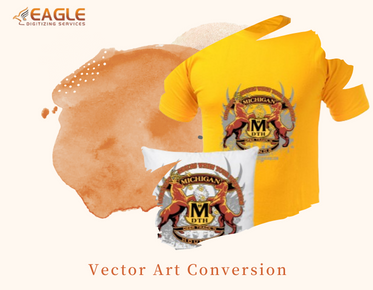How do you screen print a custom t-shirt?
Introduction to Screen Printing
Screen printing is a popular method for creating custom t-shirts because of its versatility and ability to produce vibrant, durable designs. This traditional technique involves creating a stencil (known as a screen) and using it to apply layers of ink on the printing surface. Each color of ink is applied using a separate screen, allowing for complex, multi-colored designs.
Materials and Tools Required
To get started with screen printing, you'll need a few key materials: screens, squeegees, emulsion fluid, ink, and a drying rack. Additionally, a raster to vector conversion service can be beneficial for converting your designs into a suitable format for printing, ensuring crisp and clear images. A vector artwork ensures that the design scales without losing quality, which is a critical step in the initial phase.
Design Preparation
The design process begins with creating your artwork. It is essential to utilize vector conversion services for optimizing the image for printing. Vector designs offer the flexibility of resizing without quality loss, making them ideal for this purpose. Once your design is ready, it's printed onto a transparent film.
Setting Up the Screen
Coat your screen with a layer of photo emulsion, a light-sensitive material, and let it dry in a dark room. Once the emulsion is dry, lay the transparency film on the screen and expose it to light. The light hardens the emulsion except where your design blocks it. This process creates a stencil of your design on the screen.
Printing Process
Position your t-shirt on a flat surface or printing press and place the screen over it. Pour a generous amount of ink onto the screen. Use a squeegee to spread the ink evenly across the screen, pressing it through the open areas of the stencil and onto the fabric. Carefully lift the screen to reveal the printed design. Before switching to new colors or designs, thoroughly clean the screen to prevent any ink residue from affecting future prints.
Curing and Finishing
The printed t-shirt needs to be dried and cured to ensure the ink sets properly. This can be done using a conveyor dryer or a heat press. Curing ensures the print is wash-proof and durable. For additional assistance, consider consulting with graphic design specialists to refine your artwork or ensure its suitability for screen printing.
The Role of Technology and Professional Services
As technology advances, the methods and tools for screen printing continue to evolve. Businesses like Eagle Digitizing help revolutionize vector artwork by providing efficient vector art services. These services not only improve design quality but also provide crucial support for various printing processes, including screen printing.
Reflection on Screen Printing in the Current Age
In today's digital age, screen printing remains a valued art due to its lasting and vivid results. As businesses continue to innovate and expand their offerings, exploring partnerships with services like Eagle Digitizing can enhance both the efficiency and quality of custom t-shirt production. What are the next technological advancements you anticipate could further transform this traditional craft?


